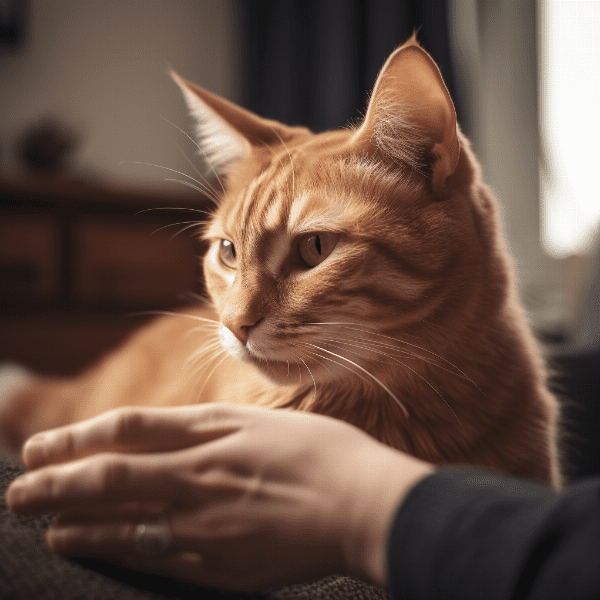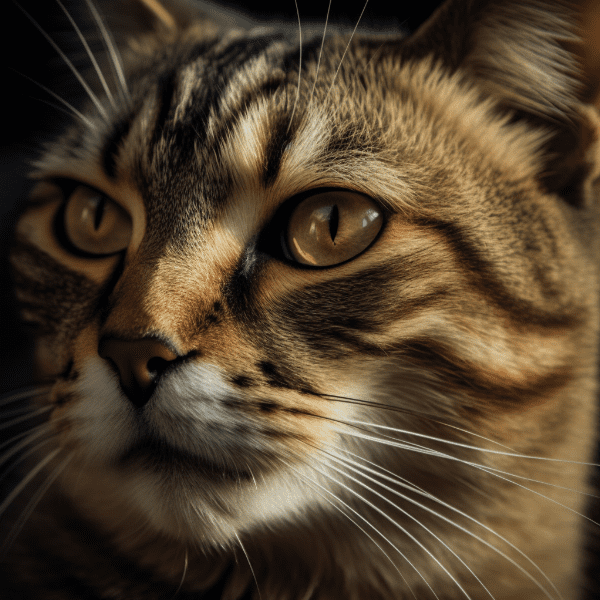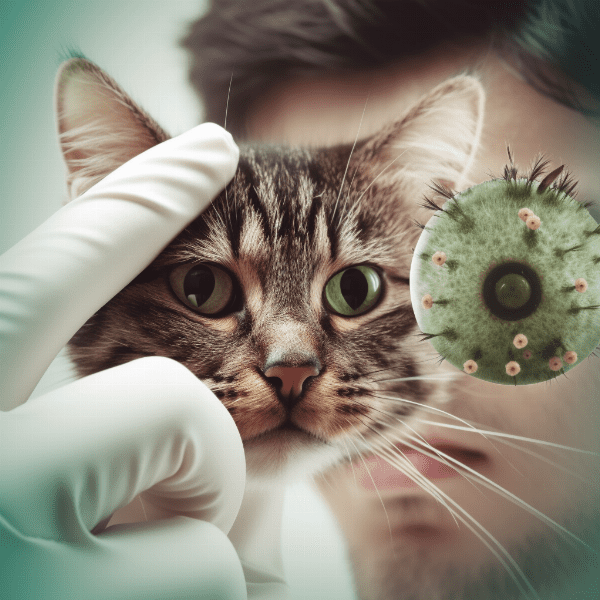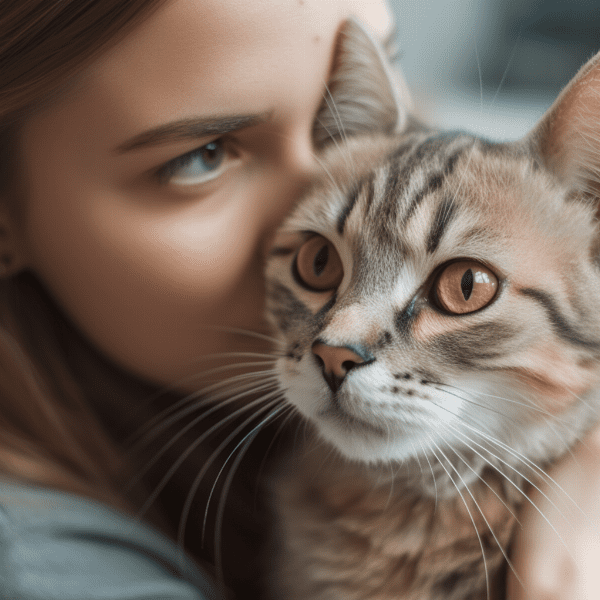Table of Contents
- Understanding Feline Keratitis
- Symptoms of Feline Keratitis
- Causes of Feline Keratitis
- Diagnosis of Feline Keratitis
- Treatment Options for Feline Keratitis
- Home Care for Cats with Keratitis
- Potential Complications of Feline Keratitis
- Prevention of Feline Keratitis
- When to See a Veterinarian
- Living with a Cat with Keratitis
Understanding Feline Keratitis
Feline keratitis is an inflammatory condition that affects the cornea of cats. The cornea is the clear outer layer of the eye that covers the iris and pupil. It plays an important role in focusing light that enters the eye, allowing the cat to see clearly.
How Does Feline Keratitis Develop?
The exact cause of feline keratitis is not fully understood. However, it is believed to be a result of an abnormal immune response to an infection, injury, or trauma. The cornea may become damaged, and as a result, the body attempts to repair the damaged tissue. However, in some cases, the immune system can overreact, leading to inflammation and damage to the cornea.
Who is at Risk of Developing Feline Keratitis?
Feline keratitis can affect cats of all breeds, ages, and genders. However, certain breeds, such as the Himalayan and Persian cats, are more predisposed to developing the condition. Cats with weakened immune systems, either due to illness or medication, are also at a higher risk of developing feline keratitis.
What Are the Signs and Symptoms of Feline Keratitis?
The signs and symptoms of feline keratitis can vary depending on the severity and underlying cause of the condition. Some common signs of feline keratitis include:
- Cloudiness or opacity in the eye
- Redness and inflammation of the eye
- Discharge from the eye
- Squinting or rubbing of the eye
- Sensitivity to light
If left untreated, feline keratitis can lead to corneal ulcers, scarring, and even blindness.
Takeaway
Feline keratitis is a serious eye condition that can affect cats of all ages and breeds. While the exact cause of feline keratitis is not fully understood, it is important to seek veterinary care if your cat is displaying any signs or symptoms of the condition. Early diagnosis and treatment can help prevent complications and improve the chances of a successful outcome.
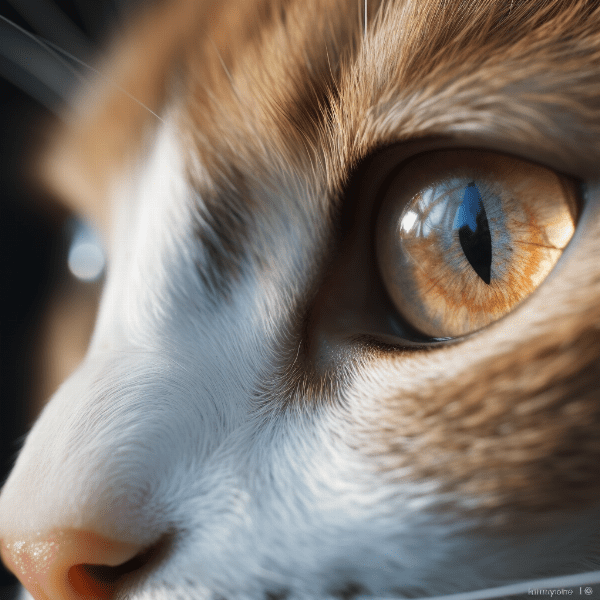
Symptoms of Feline Keratitis
Feline keratitis can cause a range of symptoms, which may vary in severity depending on the underlying cause of the condition. Some of the most common symptoms of feline keratitis include:
Cloudiness or Opacity in the Eye
One of the most noticeable symptoms of feline keratitis is the cloudiness or opacity in the eye. This is caused by inflammation and scarring of the cornea, which can interfere with the cat’s vision.
Redness and Inflammation of the Eye
Feline keratitis can also cause redness and inflammation of the eye, which can be painful for the cat. Inflammation can be caused by the immune system’s response to an infection, injury, or trauma.
Discharge from the Eye
Another common symptom of feline keratitis is discharge from the eye. The discharge can be clear, yellow, or green and may be accompanied by crusts around the eye.
Squinting or Rubbing of the Eye
Cats with feline keratitis may also squint or rub their eyes frequently. This is because the cornea may be sensitive to light and touch, causing discomfort for the cat.
Sensitivity to Light
Feline keratitis can also cause sensitivity to light, a condition known as photophobia. This can be especially noticeable if your cat tries to avoid bright light or spends more time in darker areas of your home.
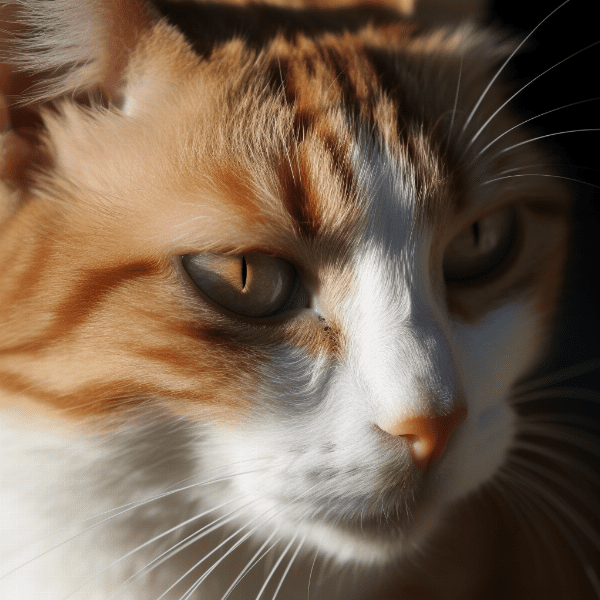
Causes of Feline Keratitis
Feline keratitis is a complex condition, and the exact cause of the disease is not fully understood. However, there are several factors that are believed to contribute to the development of feline keratitis.
Infections
Infections are a common cause of feline keratitis. Bacterial, viral, or fungal infections can all cause inflammation and damage to the cornea, leading to the development of the disease. Some common infections that can cause feline keratitis include feline herpesvirus and feline calicivirus.
Trauma
Trauma to the eye is another common cause of feline keratitis. Injuries to the eye can damage the cornea, leading to an immune response that can cause inflammation and scarring. Trauma can be caused by a variety of factors, such as foreign objects, scratches, or blunt force trauma.
Immune System Disorders
Immune system disorders can also contribute to the development of feline keratitis. Disorders such as immune-mediated diseases and autoimmune diseases can cause the immune system to attack healthy tissues, including the cornea. This can lead to inflammation and scarring, which can cause vision problems and other complications.
Breed Predisposition
Certain breeds of cats are more predisposed to developing feline keratitis than others. Breeds such as Himalayan, Persian, and Siamese cats are all at a higher risk of developing the disease. It is believed that genetics may play a role in the development of feline keratitis in these breeds.
Environmental Factors
Environmental factors, such as exposure to ultraviolet light, can also contribute to the development of feline keratitis. Cats that spend a lot of time outdoors or in bright sunlight may be at a higher risk of developing the condition.
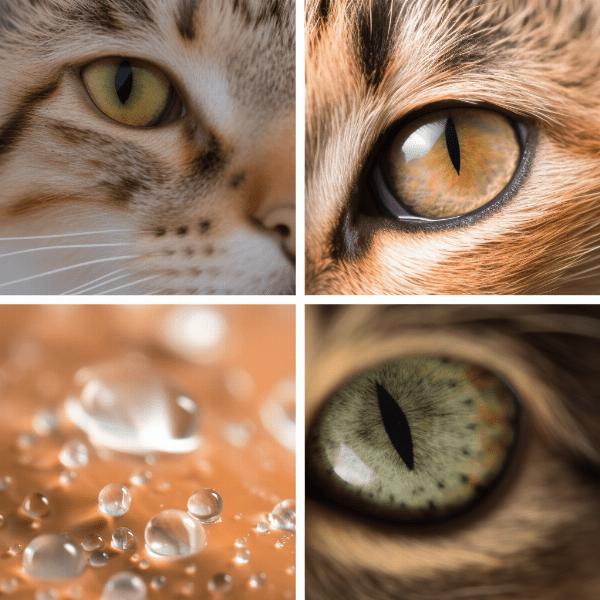
Diagnosis of Feline Keratitis
If you suspect that your cat may have feline keratitis, it is important to seek veterinary care as soon as possible. Your veterinarian will perform a thorough eye examination and may recommend additional tests to confirm the diagnosis.
Physical Examination
During the physical examination, your veterinarian will examine your cat’s eyes and may use a special light called a slit lamp to look for signs of corneal damage or inflammation. Your veterinarian will also ask you about your cat’s medical history and any symptoms that your cat may be experiencing.
Fluorescein Staining
Fluorescein staining is a common diagnostic test used to detect corneal ulcers and other abnormalities in the cornea. During this test, a special dye is applied to the surface of the eye, which will highlight any areas of the cornea that are damaged or irregular.
Corneal Scrape or Biopsy
In some cases, your veterinarian may recommend a corneal scrape or biopsy to help confirm the diagnosis of feline keratitis. During this procedure, a small sample of tissue is taken from the cornea and examined under a microscope to look for signs of inflammation or infection.
Blood Tests
Blood tests may also be recommended to help rule out underlying causes of feline keratitis, such as autoimmune disorders or infections.
Takeaway
Feline keratitis is a complex condition that requires prompt diagnosis and treatment. If you suspect that your cat may have feline keratitis, it is important to seek veterinary care immediately. Your veterinarian will perform a thorough eye examination and may recommend additional tests to confirm the diagnosis and develop an appropriate treatment plan. Early diagnosis and treatment can help prevent complications and improve the chances of a successful outcome.

Treatment Options for Feline Keratitis
The treatment of feline keratitis will depend on the underlying cause and severity of the condition. In some cases, conservative management may be sufficient, while in more severe cases, surgery may be necessary.
Medications
Medications are often used to treat feline keratitis. Depending on the underlying cause of the condition, your veterinarian may prescribe antibiotics, antifungal medications, or antiviral medications. These medications can help to reduce inflammation, prevent infection, and promote healing.
Topical Eye Drops
Topical eye drops may also be prescribed to help manage the symptoms of feline keratitis. These eye drops can help to reduce inflammation, relieve pain, and improve the overall health of the eye.
Surgery
In more severe cases of feline keratitis, surgery may be necessary. Surgical options may include a corneal graft, which involves replacing the damaged cornea with a healthy one, or a conjunctival flap, which involves transplanting tissue from the surface of the eye to the cornea.
Takeaway
Feline keratitis is a serious condition that requires prompt treatment. Depending on the underlying cause and severity of the condition, treatment options may include medications, topical eye drops, surgery, and nutritional support. If you suspect that your cat may have feline keratitis, it is important to seek veterinary care immediately. Early diagnosis and treatment can help prevent complications and improve the chances of a successful outcome.
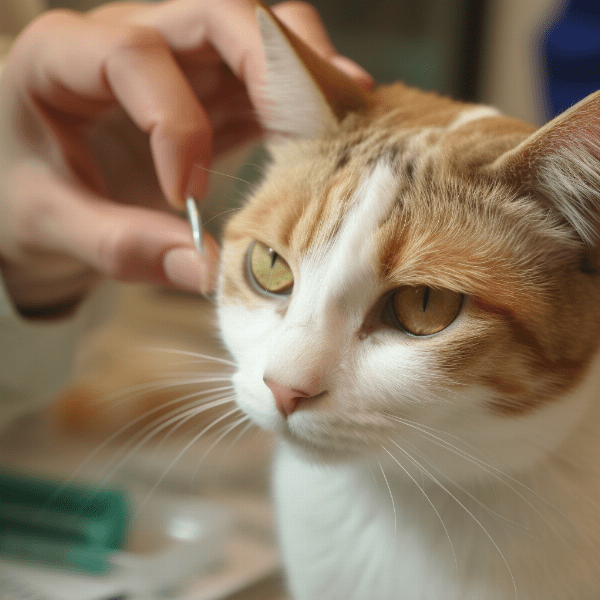
Home Care for Cats with Keratitis
In addition to medical treatment, there are several things that you can do at home to help manage feline keratitis and promote healing.
Administer Medications as Directed
If your veterinarian has prescribed medications for your cat, it is important to administer them as directed. Follow the dosage instructions carefully and continue giving the medications for the full duration of treatment, even if your cat’s symptoms improve.
Takeaway
Home care can play an important role in the management of feline keratitis. Administering medications as directed, keeping the eye clean, minimizing stress, providing nutritional support, and attending follow-up appointments can all help to promote healing and improve the chances of a successful outcome. If you have any questions or concerns about caring for your cat with feline keratitis, speak to your veterinarian.
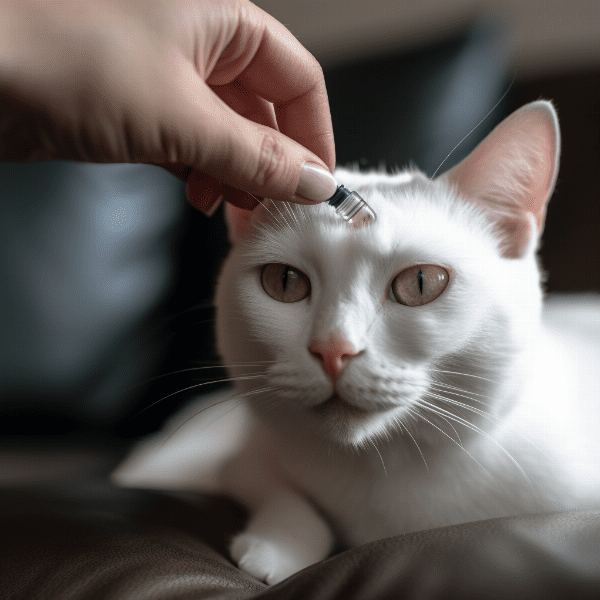
Potential Complications of Feline Keratitis
Feline keratitis can lead to several potential complications, especially if left untreated. It is important to be aware of these complications and seek veterinary care immediately if you suspect that your cat may have feline keratitis.
Corneal Ulcers
Corneal ulcers are a common complication of feline keratitis. These ulcers occur when the cornea becomes damaged and can lead to further inflammation and scarring. If left untreated, corneal ulcers can lead to vision loss and other serious complications.
Scarring
Scarring of the cornea can also occur as a result of feline keratitis. This scarring can cause permanent vision loss and other complications, such as corneal perforation.
Infections
Feline keratitis can also lead to secondary infections of the eye. Infections can cause further damage to the cornea and may spread to other parts of the body if left untreated.
Blindness
In severe cases, feline keratitis can lead to blindness. If the condition is not diagnosed and treated promptly, the damage to the cornea can become irreversible, leading to permanent vision loss.
Takeaway
Feline keratitis can lead to several potential complications, especially if left untreated. Corneal ulcers, scarring, infections, and blindness are all potential complications of the condition. If you suspect that your cat may have feline keratitis, it is important to seek veterinary care immediately to prevent complications and improve the chances of a successful outcome.

Prevention of Feline Keratitis
While it may not always be possible to prevent feline keratitis, there are several steps that you can take to reduce your cat’s risk of developing the condition.
Regular Eye Examinations
Regular eye examinations are essential for the early detection and treatment of feline keratitis. Schedule routine check-ups with your veterinarian and be sure to report any changes in your cat’s vision or behavior.
Vaccinations
Vaccinations can help to prevent certain infections that can lead to feline keratitis, such as feline herpesvirus and feline calicivirus. Be sure to keep your cat up-to-date on all recommended vaccinations.
Eye Protection
If your cat spends a lot of time outdoors or in bright sunlight, consider providing eye protection. There are special goggles available for cats that can help to protect the eyes from UV radiation and other environmental factors.
Reduce Stress
Stress can weaken the immune system and increase the risk of feline keratitis. Minimize stress for your cat by providing a calm, quiet environment and avoiding any activities that may cause stress.
Good Nutrition
A healthy diet can help to support your cat’s immune system and reduce the risk of feline keratitis. Speak to your veterinarian about a high-quality diet or nutritional supplements that may be beneficial for your cat.
Takeaway
While it may not always be possible to prevent feline keratitis, there are several steps that you can take to reduce your cat’s risk of developing the condition. Regular eye examinations, vaccinations, eye protection, stress reduction, and good nutrition can all help to promote a healthy immune system and reduce the risk of feline keratitis.

When to See a Veterinarian
It is important to seek veterinary care as soon as possible if you suspect that your cat may have feline keratitis. Early diagnosis and treatment can help prevent complications and improve the chances of a successful outcome.
Signs and Symptoms
If your cat is showing any signs or symptoms of feline keratitis, such as cloudiness or opacity in the eye, redness and inflammation of the eye, discharge from the eye, squinting or rubbing of the eye, or sensitivity to light, it is important to seek veterinary care immediately.
Eye Injuries
If your cat has suffered an eye injury, such as a scratch or foreign object in the eye, it is important to seek veterinary care immediately. Eye injuries can lead to feline keratitis and other serious complications if left untreated.
Changes in Vision or Behavior
If you notice any changes in your cat’s vision or behavior, such as reluctance to play, loss of appetite, or hiding, it is important to seek veterinary care. These changes may be a sign of feline keratitis or other underlying health conditions.
Follow-Up Care
If your cat has been diagnosed with feline keratitis, it is important to attend all scheduled follow-up appointments with your veterinarian. Your veterinarian may recommend additional treatments or medications as necessary to manage the condition.
Takeaway
If you suspect that your cat may have feline keratitis or has suffered an eye injury, it is important to seek veterinary care immediately. Early diagnosis and treatment can help prevent complications and improve the chances of a successful outcome. Be sure to attend all scheduled follow-up appointments with your veterinarian and report any changes in your cat’s vision or behavior.

Living with a Cat with Keratitis
Living with a cat with feline keratitis can be challenging, but there are several things that you can do to help manage the condition and improve your cat’s quality of life.
Follow Your Veterinarian’s Recommendations
It is important to follow your veterinarian’s recommendations for the treatment and management of feline keratitis. Administer medications as directed, attend all scheduled follow-up appointments, and follow any additional instructions from your veterinarian.
Monitor Your Cat’s Symptoms
Keep a close eye on your cat’s symptoms and report any changes to your veterinarian. Changes in symptoms may be a sign that your cat’s condition is worsening or that additional treatment is needed.
Provide a Calm Environment
Stress can worsen the symptoms of feline keratitis, so it is important to provide a calm, quiet environment for your cat. Avoid any activities that may cause stress, such as loud noises or sudden movements.
Takeaway
Living with a cat with feline keratitis can be challenging, but there are several things that you can do to help manage the condition and improve your cat’s quality of life. Follow your veterinarian’s recommendations, monitor your cat’s symptoms, provide a calm environment, keep the eye clean, and provide nutritional support. If you have any questions or concerns about living with a cat with feline keratitis, speak to your veterinarian.
